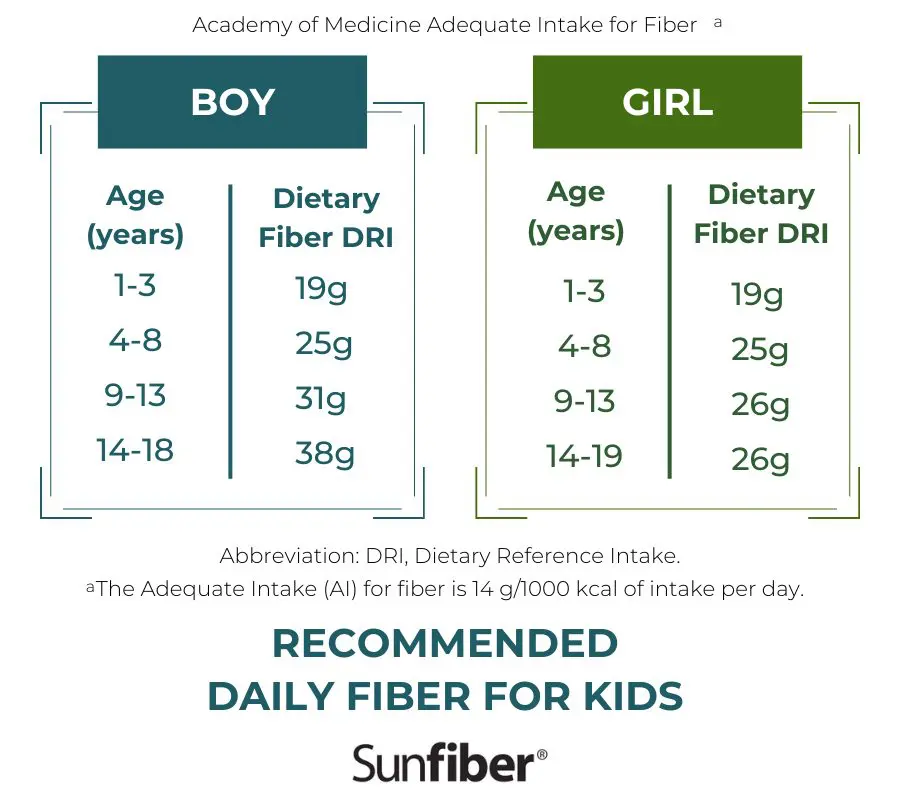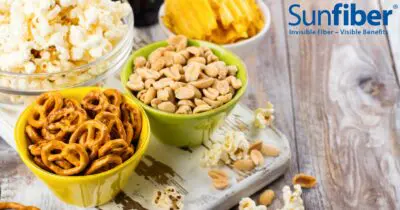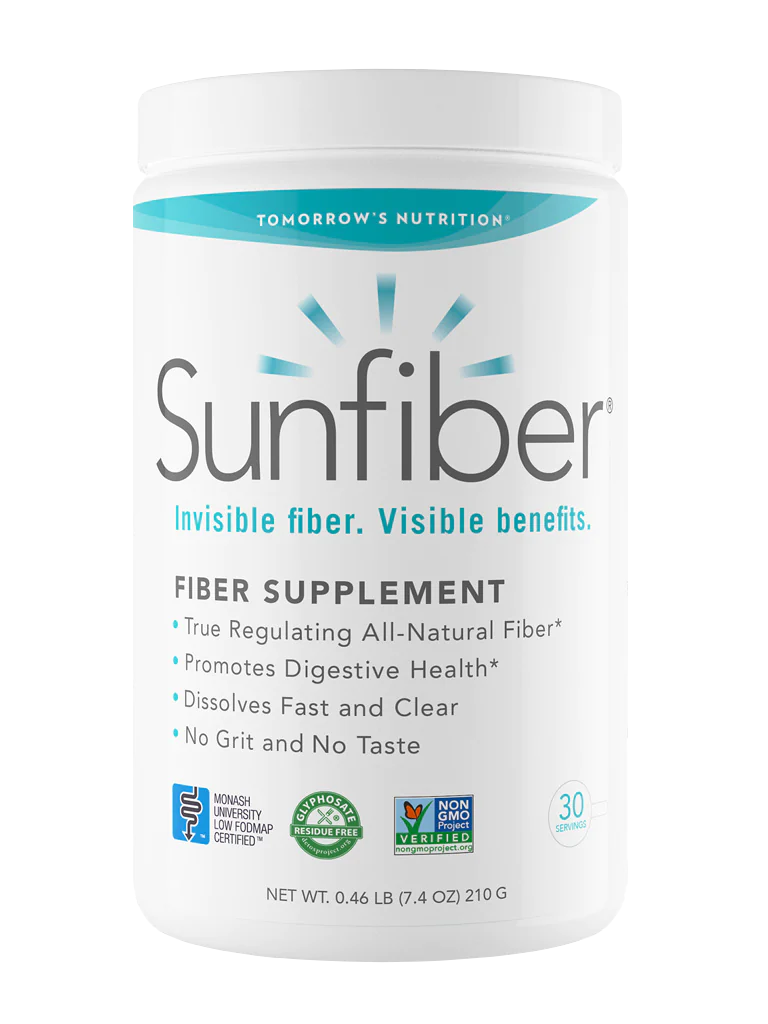Fiber for Kids

✓ Expert Review by:
Derek Timm, PhD, RDN
That means, you may have to get creative to serve a kid-friendly diet that appeals to even the pickiest eaters!

Jump to Section
What is fiber?
Fiber, or roughage, is the indigestible part of plant foods. There are two forms:
Insoluble: This is like nature’s brooms. It adds to the fecal bulk, and carries toxins with it as it exits our bodies.
Soluble: This absorbs water, helping move stool through the digestive tract. Soluble fiber also helps with digestion, feeds our “good” bacteria, moderates glucose absorption and helps you feel less hungry.
Fiber Recommendations for Children
You want what’s best for your children, especially when it comes to their digestive health. Children need fiber to support healthy bowel function and help prevent uncomfortable and hard-to-pass stools. Unfortunately, most kids only consume about half the recommended daily amount of fiber for children their age.
That may come as no surprise. You’ve likely struggled to get your child to eat more nutrient-rich foods and fewer processed foods, such as sugar, crackers and white bread. (Six kid-friendly chicken nuggets have about one gram of fiber. A grilled cheese sandwich on white bread isn’t much better.)
How much fiber do children need?
Daily Fiber Recommendations for Kids
The average 6- to 11-year-old consumes just half the recommended daily amount of fiber. Here’s how much your child should be getting daily:
- 1 to 3 years: 19 grams
- 4 to 8 years: 25 grams
- 9 to 13 years: 26 to 31 grams
- 14 to 19 years: 26 to 38 grams

How fiber helps kids
The importance of fiber for children can’t be underestimated. In addition to helping kids stay regular, (so they spend less time in the bathroom and more time in the classroom, for example) a high-fiber diet may help children absorb calcium and other important nutrients. Fiber can help kids feel full, so it may cut down on snacking.
Fiber is also essential to good nutrition because it helps nurture a child’s developing microbiome, key to overall wellness.
How to sneak fiber into your kid’s diet
The best way to sneak more fiber into your child’s diet is to add high-fiber foods or a child-friendly fiber supplement to foods and beverages your child already enjoys eating.
High fiber foods that kids love
It’s best for kids to get their fiber directly from their diet, because high-fiber foods have other important nutrients and vitamins. There aren’t many vitamins or minerals in cheese pizza. The less processed, the better.
Natural sources of fiber that kids are likely to actually eat include:
- Sweet potatoes
- Baby carrots
- Apple slices
- Blueberries
- Nuts and seeds
If your picky eater still only has one food group, grazing on finger food may still be a possibility. Try serving fresh fruits and veggies with fun dips such as cheese, avocado or yogurt. Blend bananas and avocado into a smoothie. Bake healthy seeds and grains such as flax or chia into banana bread. Top a cup of yogurt with fresh berries. Add beans to soups and salads.

How to know if your child needs more fiber
It can be tricky to figure out if your child needs more fiber, especially if some meals are eaten away from home and out of your supervision. A change in routine, sleep and diet may also cause disruptions in bowel habits. Subtle signs that your child may need more fiber include:
- Spending more time in the bathroom. Kids aren’t always comfortable discussing their bathroom habits. Consider posting a kid-friendly poop chart in the bathroom to start the conversation.
- Avoiding the bathroom in public places. Consistently holding it in, perhaps because they’re embarrassed by the smell, can result in constipation.
- Your child is a picky eater. Most kids are fiber deficient but those who struggle to eat high-fiber foods are even more likely to need a safe, effective and child-friendly fiber supplement.
Are Fiber Supplements Safe for Kids?
Yes, there are fiber supplements safe for kids. Parents should read the label to confirm the suitable age range, and should choose a type of fiber that will not cause unwanted side effects such as gas, bloating and abdominal pain.
Best fiber supplements for kids
Too much time in the bathroom, discomfort when pooping or hard, dry stools are signs you may be dealing with a constipated child who needs more soluble fiber. In addition to more liquids and high-fiber foods, it may be time to add a fiber supplement. A fiber supplement is a way to increase the fiber content and only add a few calories to the child’s diet.
Avoid choosing a chemical laxative. Those may simply address the symptoms but not the root cause of constipation. Worse, their overuse may reduce or weaken the intestine’s ability to contract. This may worsen constipation or even cause dependence. Overuse may also lead to dehydration, diarrhea and an electrolyte imbalance.
The best fiber supplements for kids are ones they’ll actually take without a fight! They’ll naturally and gently encourage regularity. Always read the label to confirm that a fiber supplement is suitable for children. Kid-friendly formats include liquids, gummies and powders that mix in liquids without forming a difficult-to-consume gel.
What to Look For When Choosing a Fiber Supplement for Children
Some important factors to consider when choosing a fiber supplement for children are:
Is it easy to use?
Will your child fight you about taking it? Will your child like the taste or mouthfeel? How many servings must your child take each day?
Are there any unwanted ingredients?
Some gummies, for example, may contain sugar, artificial dyes, sweeteners and other ingredients you’d rather avoid giving to your child.
Is the brand or primary ingredient well researched?
Is there science validating the brand’s effectiveness?
Has the brand or primary ingredient been researched on children?
Or, has all of the research been conducted on adults?
Will the primary ingredient potentially cause uncomfortable gas or bloating (tummy aches)?
Some rapidly fermenting dietary fibers, such as chicory root or inulin, may cause unwanted side effects. Fibers that more gradually ferment, such as guar fiber, are less likely to cause these unwanted side effects.
Sunfiber for Kids
Sunfiber, a natural guar fiber powder, is appropriate for all ages. The recommended dosage for children over nine months is 1 serving containing between 3 and 7 grams. Children can confidently consume Sunfiber to meet their fiber needs without experiencing undesirable side effects such as excess gas or bloating.
Sunfiber can easily be added to juice, milk, yogurt or any other non-carbonated beverage or food. It’s tasteless, odorless and dissolves in water. You can even cook with it, bake with it or add it to your child’s morning smoothie.
In addition to the traditional health benefits of dietary fiber, Sunfiber has been shown to benefit children with chronic abdominal pain or IBS. Studies have also shown that Sunfiber may help improve regularity and irritability in children diagnosed with autism spectrum disorder.
Learn More About Fiber for Kids
Discover more about children’s fiber needs.

Fiber is a brilliant potty training hack

An interview with the real “Dr. Poo” about kids, fiber and regularity

Should you give a fiber supplement to your kids?

Try these eight ideas before considering chemical laxatives

5 ways to increase your family’s fiber intake

Four ways to curb the urge to snack

Fall fruits and veggies that support your digestive health

Goodbye tummy troubles: Kid-friendly ways to boost fiber intake

Dr. Poo’s kid-friendly bathroom resource

Autism Parenting Magazine article shares how Sunfiber helps struggling kids

Dr. Sears tips for battling school-related bathroom issues

Advice from Dr. Poo: 8 steps to take before considering chemical laxatives
Final Thoughts About Fiber for Kids
Fiber is an important component of children’s diets but most kids aren’t getting enough. That may lead to tummy aches and constipation. The best way to boost kids’ fiber intake is by increasing their consumption of high-fiber fruits, vegetables and whole grains. But a diet high in fiber for kids can be challenging! So, if your child shows signs of constipation such as spending too much time in the bathroom, you may want to consider using a fiber supplement for kids.
Choose a fiber supplement that is both easy to take and safe to use on a regular basis. Be cautious about fiber supplements that ferment too rapidly, which may increase side effects such as gas, bloating and abdominal pain.

